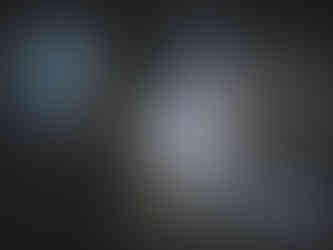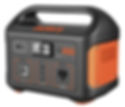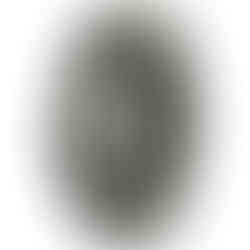Beginner DSLR Astrophotography setup walk-around (With prices!)
- Antoine & Dalia Grelin
- Aug 29, 2020
- 7 min read
Updated: Jun 6, 2023
A small refractor is usually the best telescope to start astrophotography, these are usually lightweight, portable, and easy to use. But what about the rest of the equipment? You also need to think about the mount, the camera, and the accessories you will need to start capturing incredible images of the night sky.

I recently made a video where I show you every piece of equipment I (used to) use when shooting the night sky with my small refractor telescope and DSLR camera. In this post, I will go over this as a written version and explain why I use these specific products.
The rig below is compact, fairly affordable (in Astrophotography standards..) and does not require a laptop as part of the image acquisition process. It is a beginner-level setup that only uses the most basic important parts.
If you wish to dig deeper, we have a full guide about the best beginner astrophotography equipment you can read, as well as a full tutorial post about how to start astrophotography. You will also find several other links at the end of this post that will teach you more about amateur astrophotography equipment.
The Telescope
Our favorite wide field telescope is the Askar FRA500. Let's start by saying that this is not a cheap instrument, and if the costs deters you, you should check out our post about 5 refractor telescopes within your budget, where we suggest a few great telescopes including one as low as $478!
The Askar FRA500 is a small refractor telescope that is also very lightweight and portable. It has a Petzval design, meaning it has a built-in field flattener and so you do not have to worry about having to buy any extra adapters! This is very important to us as it means we have one less fragile piece of equipment to carry into the field and never had to worry about having elongated stars on the edges of our frame.
This telescope has given us some incredible results over time and we don't see ourselves parting away with it anytime soon!
Make sure to read our full review about the Askar FRA500 to learn more about this small refractor and see example images taken with it.
Telescope Specifications
Manufacturer: Askar/Sharpstar
Aperture: 90mm
Focal Length: 500mm (350mm with additional reducer)
Focal Ratio: f/5.6 (f/3.9 with additional reducer)
Optical Design: Apochromatic Refractor
Design: Quintuplet Petzval
Image Circle: 55mm
Back Focal Length: 74mm from M48 thread
Tube Length: 452mm
Weight: 9 lbs (4.1 kg)
Price: $1999.99 (FRA300/400 are cheaper)
The Mount
Our motorized mount is a good beginner mount with a payload of 44 lb, which is more than enough for a small to medium size telescope with several accessories!
We bought this mount 5 years ago and are still in love with it. It has worked so well and can be connected to external hardware like the ASIAir for example.
We now have two mounts, our primary mount being the Software Bisque Paramount MyT (read our review!), but we still use the Atlas EQ-G as a secondary mount when shooting with two rigs!
Mount Specifications
Manufacturer: Sky-Watcher
Payload Capacity: 44 lb
Price: $1,595
The Camera
The camera shown in the video is a Canon 5D Mark II, but any used DSLR camera will do! We started out with the Canon t3i, which now costs $200 or even less on eBay!
The refractor telescope accepts both APS-C and full frame cameras, so you can pick any DSLR camera of your choosing and easily connect it to the telescope.
We suggest going on eBay and looking for cameras in the "TXi" series.
If you are looking to buy new and are not on a budget, the Canon 7D Mark II, the Canon 5D Mark IV and especially the Canon EOS Ra are all great for astrophotography.
Price: Depends on the model.
The images below were all taken with the super affordable Canon t3i
The Intervalometer
Although a lot of people like to use a laptop with Backyard EOS to capture images through their DSLR camera, we like to keep it simple and use an intervalometer. Our laptop is only used to guide using PHD2, mostly because we are paranoid that the battery will die too fast if we use other softwares at the same time.
A wired intervalometer like the one we use is very affordable. It is simple to use and runs on two batteries that last a long, long time. We use the intervalometer to select our exposure time and the number of shots we'd like to take.
Price: $19.99
The Auto-Guiding Solution
Although guiding is not absolutely necessary if you are a polar alignment master, it is always nice to have to ensure that your stars will always be pinpoint and round no matter the exposure time.
The guide telescope we use is the 50mm guide scope from Orion. Our main guide camera is the ZWO ASI290MM mini, which we now use with our Off-Axis-Guider on our main rig. The guide camera shown in the video is the QHY5III 462C, which is great as well but costs a little more.
Want to learn all aspects of astrophotography in the most efficient way possible?
The Galactic Course includes a LIFETIME membership that gives you unlimited access to all current and upcoming astrophotography content. Step into an ever-growing realm of knowledge and learn at your own pace. Make life-long friends and connections with other members, and get tips from instructors that truly care about your journey and progress under the night sky.
The Battery
We only need to provide power to one part in this whole setup: the mount.
The camera runs on its own battery and the guiding camera is powered by the laptop.
We use a lithium battery from Jackery called the Explorer 500. This is very lightweight, has plenty of ports, and easy to charge. This is more expensive but much, much less frustrating to use than a heavy deep cycle battery which we used in the past.
Price: $499.99
The Focusing Accessory
The cheapest part of this whole setup, but a very important one!
We use a Bahtinov mask to help us reach the perfect focus before imaging. The one we are using for this rig was actually free because our friend Devron 3D-printed it for us!
Bahtinov masks are very easy to make yourself and so are very affordable from online stores as well. You just need to make sure you get the right size for your telescope!
Price: $Free if you can 3D-print it, if not $20
The T-Ring
A T-Ring is a small, thin ring that connects to the DSLR camera, and then screws into the adapter that came with the telescope (or field flattener/coma corrector if you need one of these).
This ring replaces the lens of your camera and attaches to your camera the same way a lens does.
You need to ensure that you get the right T-Ring for your camera. The one on the left is for Canon cameras and the one on the right is for Nikon.
Price: $19.99
Polar Alignment
This is optional, but if you'd like to make your life easier, the QHY Polemaster is a great device to achieve really good polar alignment in just a couple of minutes.
There are other tools for polar alignment nowadays, like the ASIAir or Sharpcap, but the Polemaster is our favorite.
We usually polar align as soon as it gets dark, then remove the Polemaster from the mount and start imaging.
Read our review: QHY Polemaster: Does it really make a difference?
Price: $296
Video Guide
Final Thoughts
The seven parts listed above are all you need to have a great astrophotography setup. With this wide telescope, you could even put the auto-guiding solution on hold if you don't have the money just yet. You also wouldn't have to purchase an intervalometer if you own a recent DSLR camera, as many cameras now have a built-in intervalometer!
We have several other guides related to beginner astrophotography equipment, so make sure to check those out if you are still unsure about what to get as a first rig! Some are linked below:
Make sure to follow us on Facebook, Instagram, Twitter and YouTube to stay up to date with our work!
Clear Skies,
Galactic Hunter
GALACTIC HUNTER BOOKS
Description: Discover 60 Deep Sky Objects that will considerably improve your Imaging and Processing skills! Whether you are a beginner, intermediate, or advanced astrophotographer, this detailed book of the best deep sky objects will serve as a personal guide for years to come! Discover which star clusters, nebulae, and galaxies are the easiest and most impressive to photograph for each season. Learn how to find each object in the night sky, and read our recommendations on imaging them in a quick and comprehensive way. Each target in this guide contains our advice on imaging, photos of expected results, and a useful information table. We've also included a few cool facts about each target, a map to find it in the night sky, and more!
Description: The Astrophotographer’s Journal is a portable notebook created for the purpose of recording observations, cataloguing photographs, and writing down the wonderful memories created by this hobby. This book contains more than 200 pages to memorialize your stargazing and imaging sessions, as well as a useful chart on the last pages to index exciting or important notes. Read back on the logs to see how much progress you have made through the months, the problems you overcame, and the notes taken to improve in the future. Just as the pioneers of astronomy did in their time, look up and take notes of your observations as you are the author of this star-filled journey.
Description: The Constellations Handbook is a logical guide to learning the 88 constellations. Learning the constellations is difficult. Remembering them is even harder. Have you ever wanted to look up to the night sky, name any pattern of stars and be able to tell their stories? This book groups the constellations in a logical order, so that the reader can easily learn them by their origin, and see how their stories interact with one another as a group. The last pages of this book include an index of all 88 constellations, each with a slot where you can write your own personal tips and tricks in order to memorize them with ease. The Constellations Handbook is not just another guide listing all the constellations from A to Z and their location, it is the perfect companion for stargazing, and a learning journey through the ages.
































